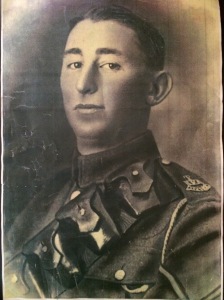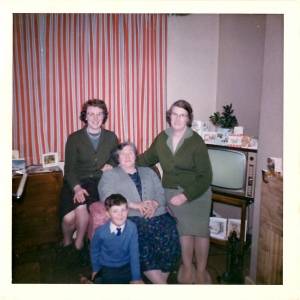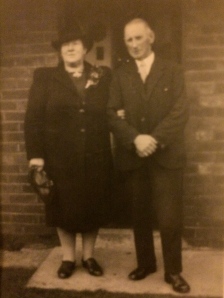In the last fortnight, our family has added two brand new tiny humans to the clan but we also lost our matriarch, my Granny Russell.
Irene was the very youngest of 20 children, Yes, you read that correctly, 20 children. She eventually went on to marry Archie and they had 4 children together, including my mum. From what I’ve heard about them, Archie and Irene were a force to be reckoned with. They had a large circle of friends, many of whom my grandad served in the army with. Something everybody mentioned when asked about Archie or Irene was their parties. They were legendary apparently. Adults and children alike were crammed into their house for special occasions such as Hogmany (the Scot’s term for New Years Eve). All friends and family were invited but it was more of an instruction. It wasn’t a case of “we’d love it if you could come” but more a case of “we’re having a party and we WILL be seeing you there!” Looking at photos of a young Irene, it was easy to agree that she was a pretty young thing. She obviously caught quite a few eyes in her day as when she was identifying friends of Archie’s in an old photo, her reply was “that’s so-and-so, he asked me out. That one is so-and-so, he asked me out too. And him, well he asked me out but I’d already said I’d go out with Archie so I could hardly say yes, now could I?” I got the sense she enjoyed the attention, the wee flirt.
Granny will be well remembered for lots of things by lots of people: her sense of humour, her straight talking, her tiny stature, but everybody would agree that she was a very caring woman. Every day she put out food for the birds and squirrels in her garden. She looked after me every day after school and took me swimming weekly. You couldn’t visit her house without being offered food whether you liked it or not. If you didn’t fancy a ham sandwich, what about a bacon sandwich? Or some soup? Or there’s fruit there too. As grandchildren, even as adults, you had to have a biscuit or a sweetie from the tin before you left the house. Above all of this, she raised 7 children. She raised her own 4 and then many years later, raised 3 of my cousins. We’ve all been given some sage advice from her the years but my favourites will always be “don’t do anything I wouldn’t do, but that leaves your options wide open” and “you don’t want to get to my age and regret the things that you *didn’t* do.” A steadfast rebel who embraced life for all it was worth. That’s definitely something we could all do with remembering sometimes.
One of granny’s last instructions was to drink of of her wine for her. Through tears, my cousin and I both agreed to raise a sizeable glass and live life as fearless rebels, all in Irene’s honour.




